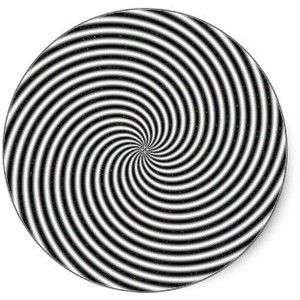|
(2016
final exam assignment) Sample Student Final Exam Essays 2016 Essay 1. Define "genre" + examples |
LITR 4370 Tragedy

|
 |
Adrian Russell
9
July 2016
Batman: The Tragic Hero
One can pilfer through any comic book store and find comedy, romance and
most certainly tragedy. However, when discussing tragedy as it related to the
comic book genre, one particular anti-hero stands out. Batman is the ultimate
tragic hero. Using the topics of audience, formal genre and narrative genre, the
comic book genre will be explained along with the notion that Batman is indeed
the ultimate tragic hero.
The comic book genre audience can range from young children to adults of
any age. In fact, there are multiple comic book titles designed to cater to
these specific age groups. Comic books such as Archie and early superheroes,
including Spiderman and Superman, were originally intended for young teen and
pre-teen children. As the allure of comic books progressed over the last
century, comic book writers began to be inclusive towards female comic book fans
by adding characters such as Spiderwoman and Supergirl.
Prior to that, the female characters were typically either the love
interest of the hero, the “damsel in distress”, or both. Many characters are
born in the comic book world and go on to be even more successful as a cartoon
or movie franchise, helping the particular story or character reach an even
bigger audience. This can be seen with the Teenage Mutant Ninja Turtles and
nearly any superhero movie.
A major draw towards comic books is that they are very easy to read.
There may be some narration here and there to set a scene, but typically comic
books are comprised of dialogue between characters. With someone like Batman,
his character tends to “think out loud” in order for us to read dialogue and get
a sense of the scene at the same time. These “thought bubbles” can also be
interpreted as a reimagining of the chorus in ancient Greek tragedy. The inner
dialogue of the character is the “fourth wall” of the stage that separates the
reader from the character. The purpose of this is to bring the reader into
closer relation to the tragic hero by letting us see their thought process. For
instance, Batman might say, “I’ve been searching for the Joker all night and no
sign of him. Robin never returned from his mission last night in the south
district. I should head that way
and check things out.” Then, Alfred, Bruce Wayne’s butler, might call and say,
“Master Bruce, Ms. Vicki Vale left since you didn’t show for dinner… again. I am
still attempting to triangulate Robin’s position. However, The Riddler is
attempting to release inmates from Arkham Asylum.
You should head North to stop him.” Even from this short amount of
dialogue we know that Batman is searching for The Joker, Robin is missing,
Batman/Bruce is in a troubled relationship with Vicki Vale and the dilemma in
this issue is that Batman must choose between comforting his love interest,
finding his adopted son, or stopping The Riddler from releasing havoc on Gotham.
The reader has the entire setting and because of the thought bubbles
acting as the chorus they feel more emotionally invested in Batman’s dilemma.
As stated, tragedy, romance, and comedy are predominant in comic book
culture. Though Batman can be seen as a character of the Dark Romance genre, he
is more predominantly a tragic character. The story of Batman begins with him as
a young boy witnessing his mother and father, who are the elite upper-class of
Gotham, murdered in an alley in front of him. Young Bruce Wayne was deeply
affected by this trauma and set out on a quest of spectacle and vigilante
justice against evil-doers in the city of Gotham. This brings about the
generational aspect that is so prevalent in the tragedy genre. For instance,
Oedipus’s plight was passed from his parents and then on to his children. Batman
similarly passes the torch of his tragic flaw on to the young men who become his
sidekick. Being that Bruce was an orphan, he has a soft spot for other orphans
and adopts a promising young man named Dick Grayson, who becomes Robin. Dick
later moves on from Batman citing that he must be out on his own and Bruce is
“not his father”. Dick Grayson becomes Nightwing and encounters his own
tragedies. Batman then replaces Dick with a young man named Jason Todd. Jason is
abducted by Batman’s arch nemesis, The Joker, and beaten to death. As it turns
out, Jason is brought back to life using what is known in the comics as “The
Lazarus Pit” and he becomes a destructive force that battles against good and
evil, including Batman. To reinforce the generational tragic flaw, Batman
enlists Commissioner Gordon’s daughter as Batgirl.
She is then shot in the back by The Joker and becomes paralyzed from the
waist down. Family tragedy is very central to the plot of Batman.
Duality, reminiscent of the Apolline/Dionysiac duality described in Nietzche’s
The Birth of Tragedy, is another main
theme of the story. The character is Bruce Wayne by day and Batman by night. As
readers dive deeper into the story, it begins to become more apparent that
Batman feels a strong tie to some of the villains, such as Catwoman and the
Joker. This suggests he is torn between good and evil and may even sympathize
with whatever trauma may have caused these characters to become the villains
they are. The audience is drawn to Batman for the same reason he is drawn to
these villains. The duality of good and evil appeals to us. Tragedy appeals to
us because it is relatable. We are Batman.
Another way to look at the Apolline/Dionysiac structure of Batman is that Bruce
Wayne is the Apolline character and the arch nemesis, The Joker, is the
Dionysiac character. The Joker portrays someone who rejects civil structure,
government and the idea of good and evil. In The Joker’s mind, he is just
playing and having fun. He constantly refers to his relationship with Batman as
a game. One may question where Batman fits in this particular Apolline/Dionysiac
structure. He could be seen as the blurred line that many people dance on
between Apolline and Dionysiac tendencies. This idea could mean that Batman
could also be seen as the chorus and
the tragic character.
The
story of Batman, more than other comics, has all of the makings of a
conventional tragedy. Moreover, Batman may capture villains and stop their evil
plots temporary, but this is never definite. Batman never really wins. Not only
that, but his choice of vigilante justice as a profession consistently puts the
ones he loves in danger. Robin eventually gets murdered by The Joker and
Commissioner Gordon’s daughter, who is also Batgirl, gets shot in the back and
paralyzed by The Joker. The plot and the anguish perpetually develops. The fact
that Batman never really wins rules out the conventions of romance and comedy,
though elements of these conventions are used in particular issues from time to
time. For an example, Batman and Catwoman have an odd romantic attraction to
each other and The Riddler and The Joker provide comic relief when not
terrorizing the city.
The
comics with the largest audiences are the ones containing characters,
antagonists and protagonists alike, who are not completely good or bad. The
audience can range from young children to grown adults and the text is mainly
dialogue. Being that many other superhero characters exhibit tragic flaws,
spectacle, exaggeration, and tragedy within family ties, this genre is a very
powerful comparison to ancient Greek Tragedy and serves as an example of how
tragedy modernizes.


